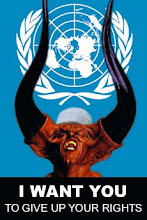+ Play Audio | + Download Audio

The date was March 8th, less than a month ago. In a remote corner of Kansas, the sun was going down and the deepening twilight beckoned to photographer Doug Zubenel driving through the countryside. Something photogenic, he knew, was about to happen.
He turned his car onto an unfamiliar dirt road and proceeded into the sunset. "The brilliant sun did not allow me to see the cement railings on a bridge over a small creek. The next thing I knew, I had totaled my car!" Zubenel emerged from the wreckage, phoned 911, and while he was waiting for the tow truck to arrive, took the picture:
Last night's conjunction of the crescent Moon and the Pleiades was tail-wagging beautiful. Literally. "My friend's dog, Sidney, decided that wagging her tail against my tripod was a great idea," says photographer Greg Scheckler of North Adams, Massachusetts. Here is the result:

"Happy accident or strange goof," he says, "we now have an abstract picture of Luna with the Seven (or three hundred!) Sisters."
Click on these links to view more traditional exposures: from Sanath Kumar of South Dakota State University, Brookings, SD; from Patrick Boomer of West of Red Deer, Alberta, Canada; from Alan Dyer of Cluny, Alberta; from Jeffrey Berkes of West Chester, PA; from Mark Riddick of Staunton, Virginia; from David Harvey of Tucson, Arizona; from Dr. Fritz Helmut Hemmerich of Tenerife, Canary Islands, Spain; from Pete Lawrence of Selsey, West Sussex, UK; from P. Presby, J. Fairfull and J. Stetson of South Portland, Maine; from Tim Printy of Manchester, NH; from Jan Koeman of Kloetinge, The Netherlands; from Piotr Majewski of Torun, Poland; from Alex Lloyd-Ribeiro of Manchester, England; from Geir Øye of Ørsta, Norway; from Dean Drumheller of San Mateo CA; from Mohammad Smadi of Fargo, North Dakota;
"It was a beautiful 1-day old crescent moon," says Zubenel. "It looked a lot better than my car!"
This perilous scene is about to repeat itself—three times.
First – On Sunday evening, April 6th, a 2% crescent moon emerges from the glare of the sun like the wry smile of a Cheshire cat beaming through the tawny-orange sunset. Finding this delicate sliver may require some careful scanning of the western horizon and it would be wise to exit the car (or at least brake) before looking. The next night is easier.
Second – On Monday evening, April 7th, a 6% crescent materializes a little higher in the sky. Set against the cobalt-blue of early evening, the moon reveals its lovely da Vinci glow, a pale impression of the full Moon inside the vivid crescent. Five hundred years ago, Leonardo da Vinci was first to explain this phenomenon: it is Earthshine, the light of our own planet Earth illuminating the Moon's dark terrain. A crescent moon with Earthshine is widely regarded as one of the prettiest sights in the heavens.
But the best is yet to come….
Third – On Tuesday evening, April 8th, a 12% crescent Moon moves into conjunction with the Pleiades. "Into conjunction" is astronomy jargon for "side-by-side." The Moon will be so close to the Pleiades that, to the naked eye, they seem to touch, but that is impossible because the Pleiades are 400 light years away.
Also known as the Seven Sisters, the Pleiades are a cluster of young stars. The brightest seven of these blue-white beauties form a little dipper shape as wide about as the Moon (0.5o). In spite of their great distance, the Pleiades are faintly visible to the naked eye even from urban areas.

 Right: A deep-sky exposure of the Pleiades star cluster by amateur astronomer Robert Gendler. [More]
Right: A deep-sky exposure of the Pleiades star cluster by amateur astronomer Robert Gendler. [More] On April 8th, the Moon will lead you directly to the Pleiades. Binoculars are recommended: scan around the Moon and you will find not just seven but dozens of sparkling stars, some of them winking in and out behind the mountainous lunar limb. The Moon itself may take your breath away as you sweep your optics across the cratered Earthlit landscape.
=====================================================================

















No comments:
Post a Comment